
Unagi (eel) rolls are a must try for anyone who enjoys sushi. While the thought of eating eel can be a little intimidating for some, once you try it you won’t be disappointed. The combination of the barbecued eel, tangy unagi sauce, vegetables, sushi rice, and nori give this roll a flavor that’s hard to beat.
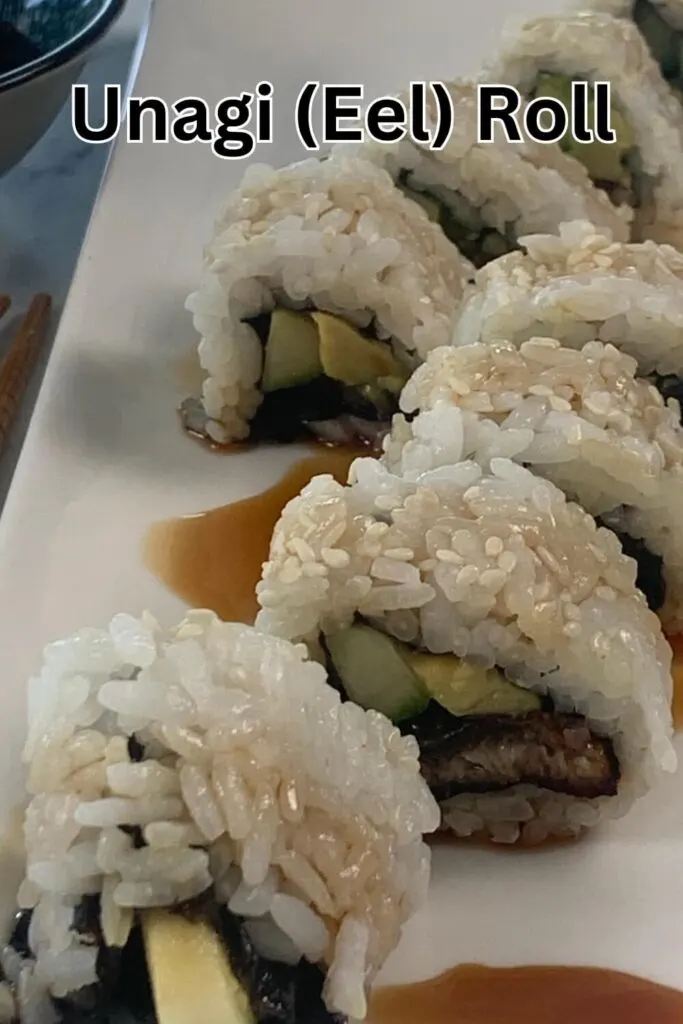
Table of Contents
What is an Unagi (Eel) Roll
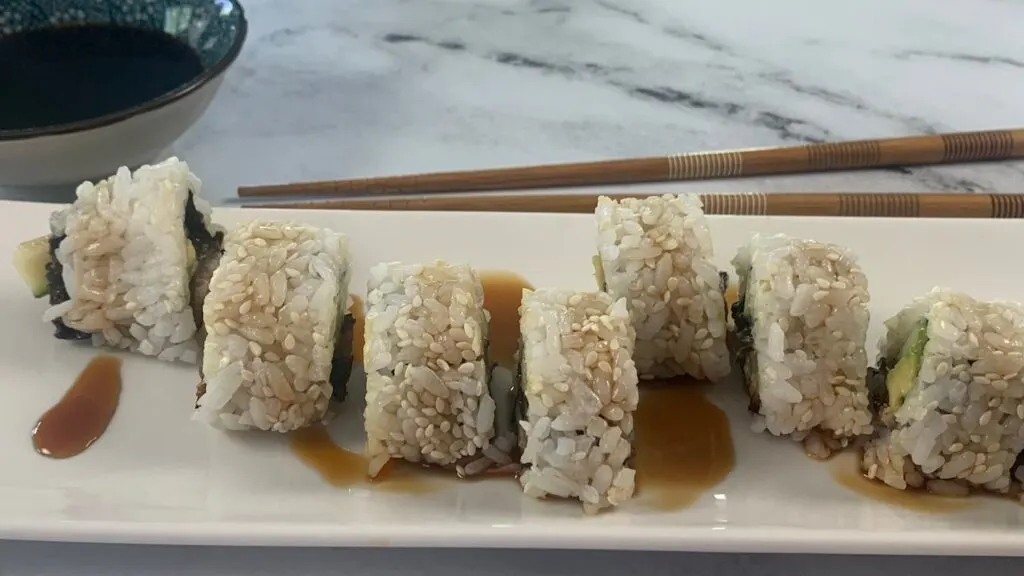
Unagi, or Japanese freshwater eel, is popular throughout Japan. It’s eaten in many forms including barbecued and served over rice (unagi don) or in sushi form both as a roll and a nigiri. If you enjoy the unagi (eel) roll, I strongly recommend trying unagi don and unagi (eel) nigiri as well.
Like most sushi rolls, the exact ingredients used in unagi rolls differs from chef to chef. Some chefs drape the eel over the top of the roll similar to the way the salmon is draped over an Alaska roll. I personally enjoy my unagi rolls prepared in the uramaki style (where the rice is on the outside and the fillings are on the inside), with the eel, cucumber, and avocado fillings on the inside and homemade unagi sauce drizzled over the top of the roll.
Are Live Eel Used in Unagi Sushi?
If you visit a Japanese or Asian grocery store, you may see several tanks of various live eel. While starting with live eel and preparing your unagi from scratch is delicious, I almost always start with a frozen barbecued eel when preparing unagi rolls and other unagi dishes. Most sushi restaurants and homes in Japan also start with a frozen eel when preparing unagi sushi.
How to Control the Thickness of Your Sushi Rolls
You can control how thick your sushi rolls are by how much of the nori sheet you use. I prefer to use half a nori sheet for unagi (eel) rolls as this makes them easier to eat with chopsticks and the ingredients fit well in a smaller roll. However, this does make them more difficult to roll.
If you like thicker rolls or if you are having trouble rolling the sushi, you can use the entire nori sheet. This will definitely make the rolls thicker and easier roll. You can also cut off the top 1/4 of the nori sheet to reduce the thickness of the roll depending on your preference.
How do You Make Unagi (Eel) Rolls?
While making eel might sound a little intimidating, it’s as simple to prepare as most other fish if not easier. The barbecued eel comes frozen and covered in an unagi sauce. However, I usually remove the sauce that comes on it as I prefer my homemade sauce. Below we take you through how to prepare the eel and assemble the roll.
Thaw the Eel
1. Thaw the eel fillet by putting it in the fridge the night before you plan to use it. If you are in a time crunch, you can also thaw it quickly by running the package through warm water.
Cook Sushi Rice
1. Rinse 2/3 cups of sushi rice by placing it in a colander and running water through it until the water is clear.
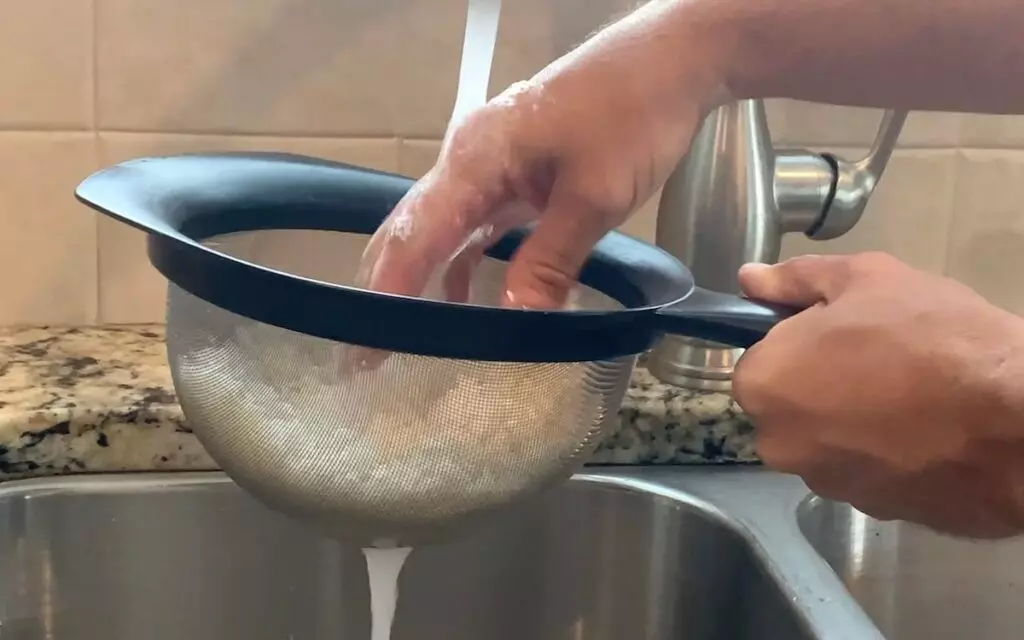
2. After the rice is rinsed, add it to a sauce pan with 1 cup of water (I would check the instructions on the sushi rice package to see exactly how much water to add as it can vary depending on the brand).

3. Bring the water to a boil and then reduce the heat to low. Cover and let the rice simmer for 20 to 30 minutes, or until the water is absorbed and the rice is soft.
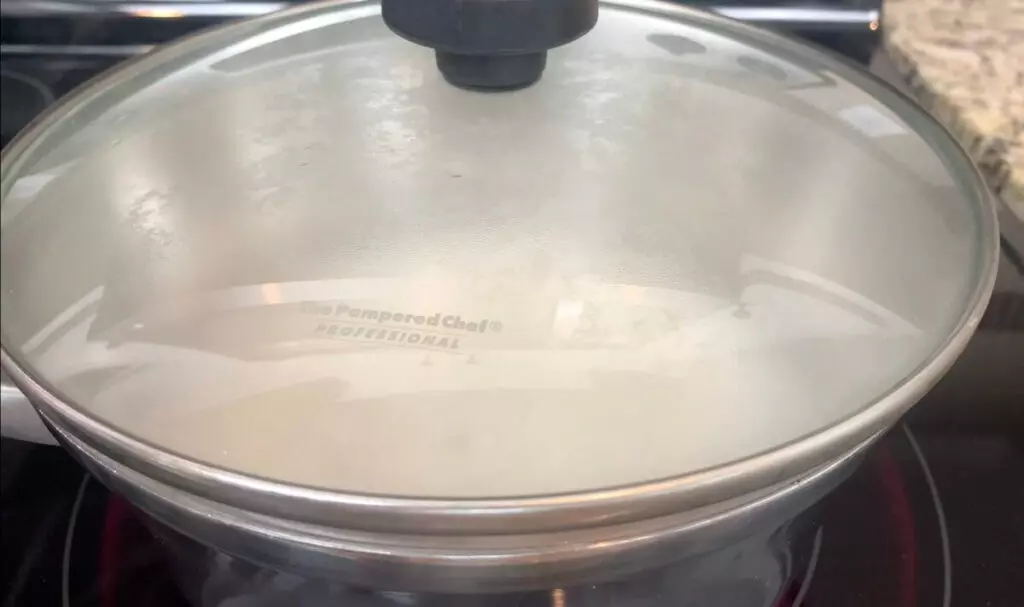
4. Remove the rice from the heat and place into a bowl or dish and let cool. I would line the dish with parchment paper prior to adding the rice to avoid sticking.
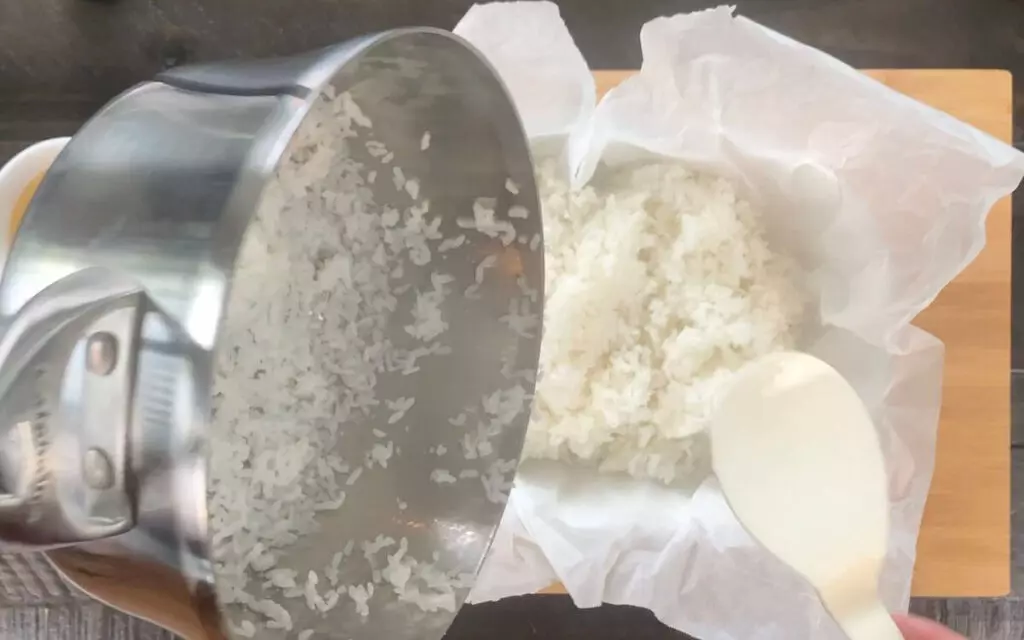
5. Mix two tablespoons of sushi vinegar into your rice. Stir until the vinegar has absorbed into the rice. Once cooled and the vinegar has been fully absorbed, your rice is ready to roll!

Prepare the Eel (Unagi) Sauce
1. To prepare the unagi sauce, combine soy sauce, sugar, and mirin into a sauce pan and heat on medium heat. Stir together as the pan heats up until the mixture is combined.
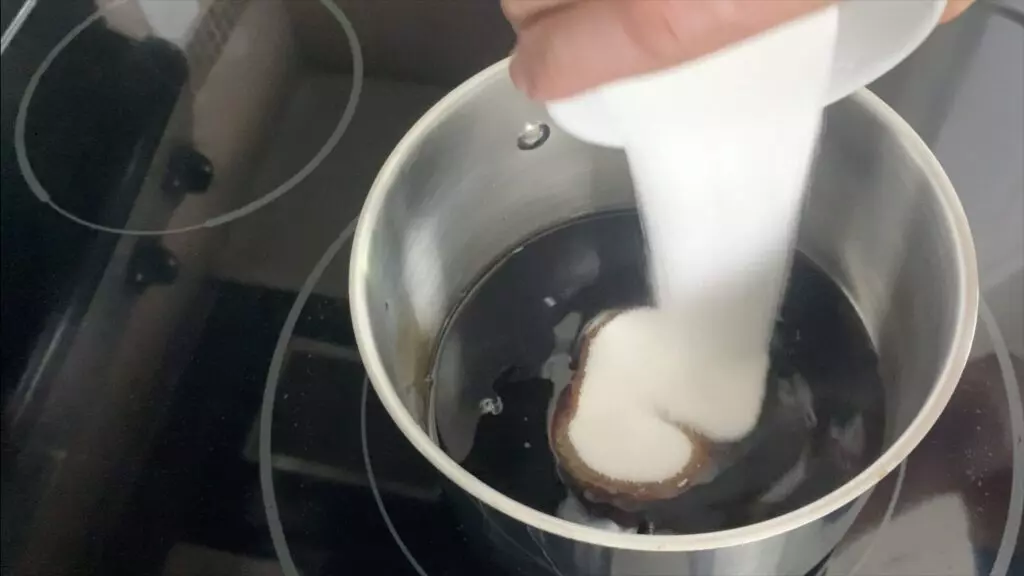
2. Bring the mixture to a boil and reduce the heat to simmer.
3. Simmer for 10 to 15 minutes, stirring occasionally.

4. Turn off the heat and let the sauce cool. You will notice it thickening as it cools.
Prepare the Eel
1. Remove the thawed eel fillet from the package and place on a plate.
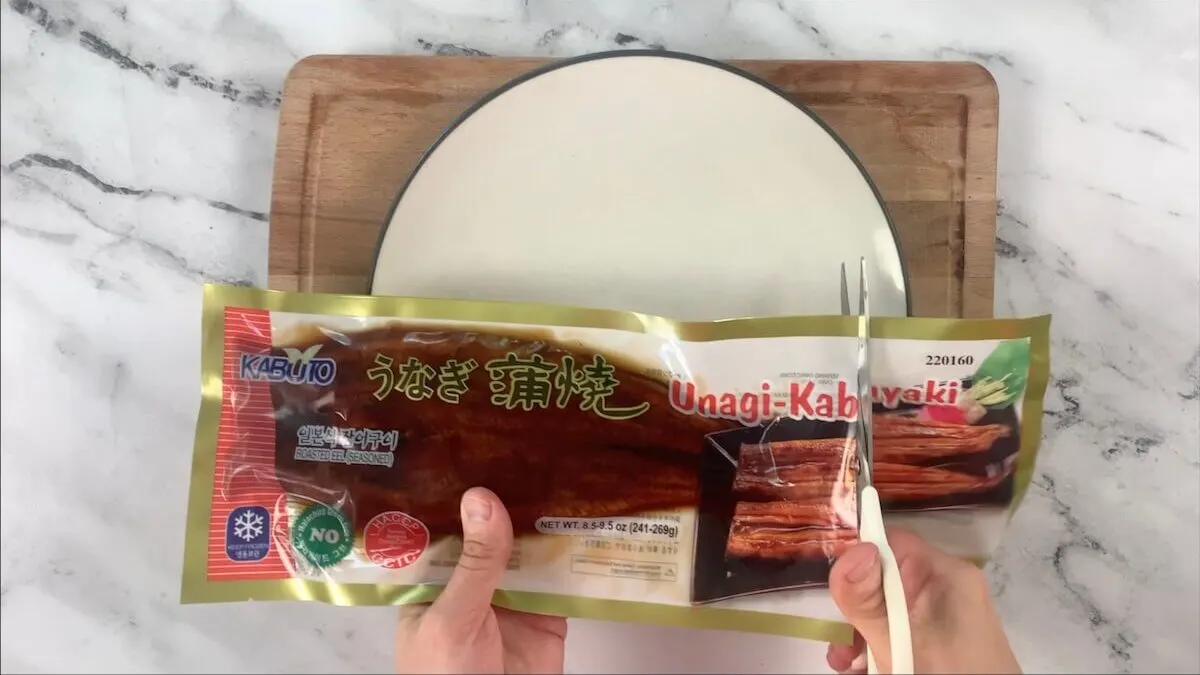
2. Wipe the existing sauce from the eel with a paper towel or cloth. Many chefs don’t do this but I don’t love the sauce that comes on the eel. I instead prefer to add my own unagi sauce both inside the sushi roll with the fillings and drizzled over the top of the sushi roll after it’s cut.
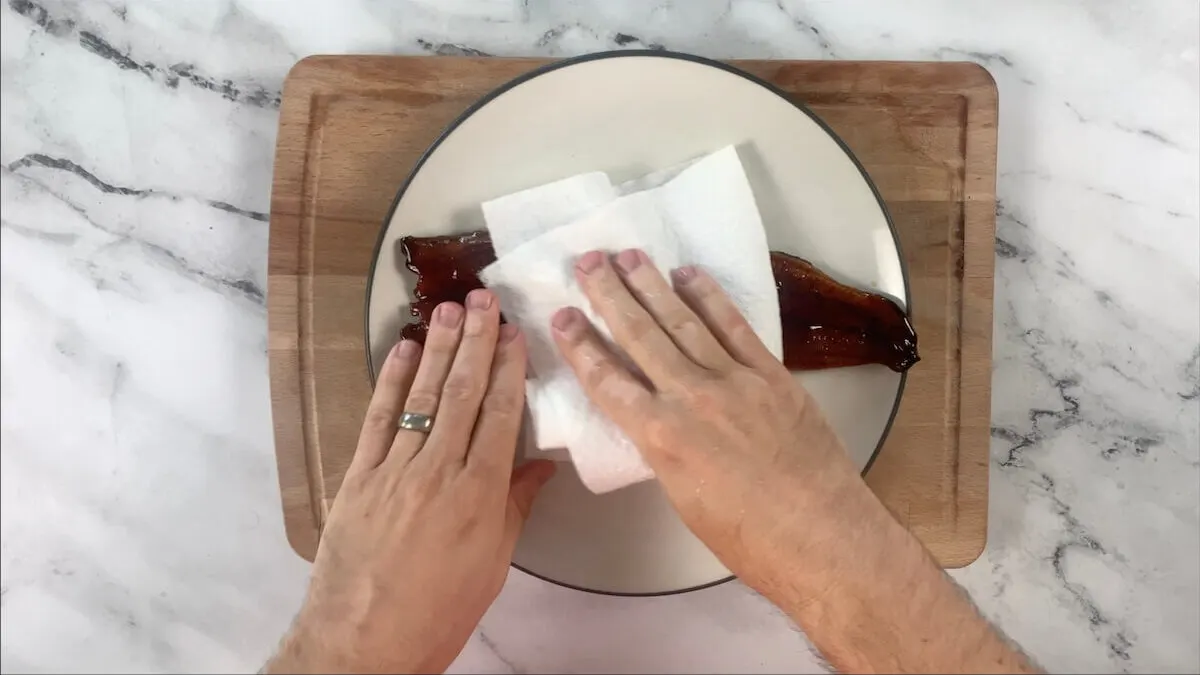
3. Once the sauce is removed, slice the eel in half down the center creating two long fillets.
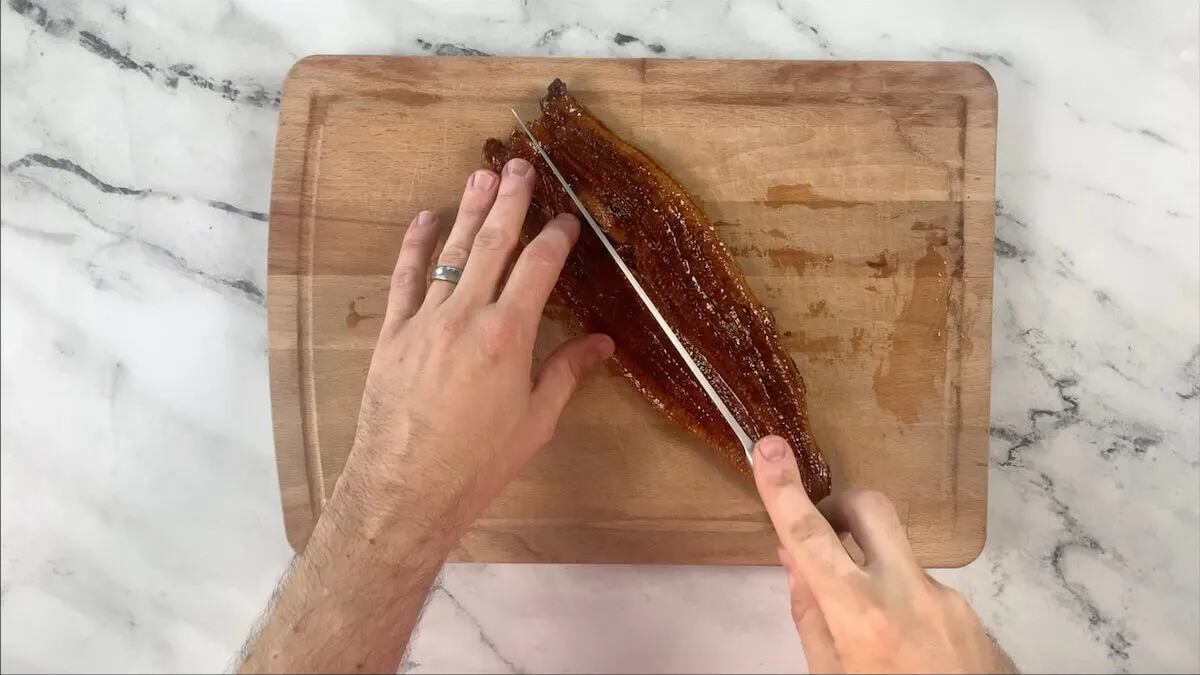
4. Place half of the eel fillet at a 45 degree angle on the cutting board. Then cut the eel into slices an inch or so wide and around 3 inches long. When cutting, tilt your knife at a 45 degree angle.

5. Add the eel strips to a greased baking sheet with the skin side up and broil on high heat for six minutes. Place on the top rack so it’s around 9 inches from the heat.
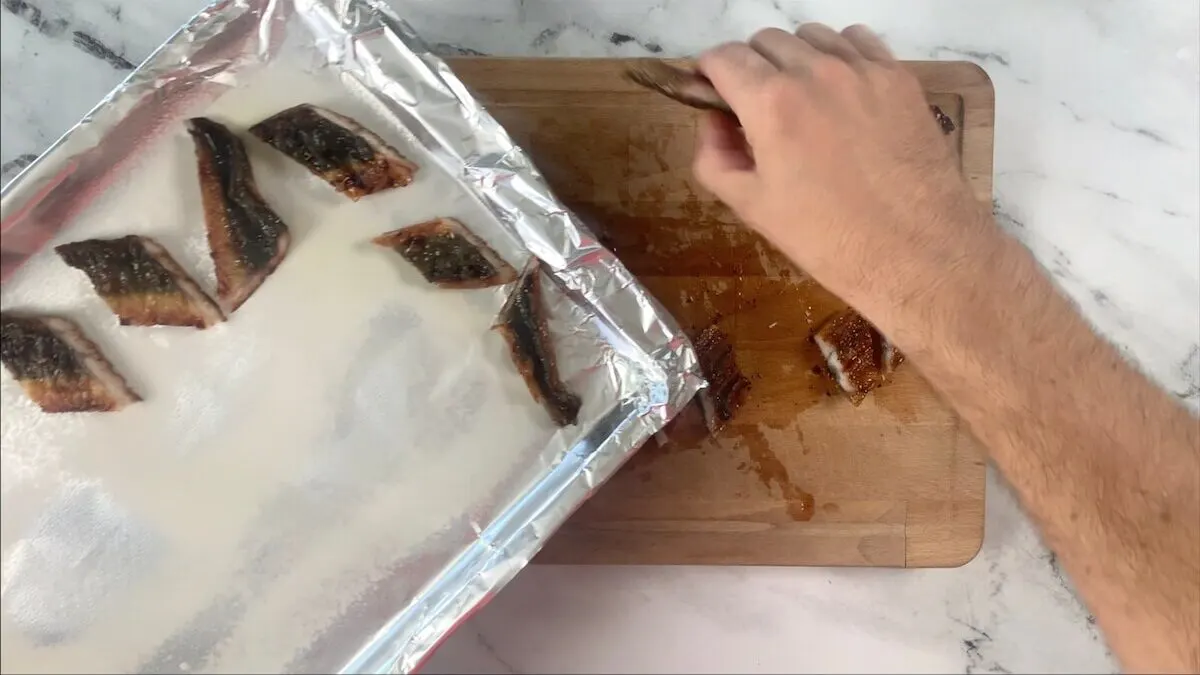
6. After broiling, quickly remove the eel from the baking sheet and place on a plate to be used in the sushi later.
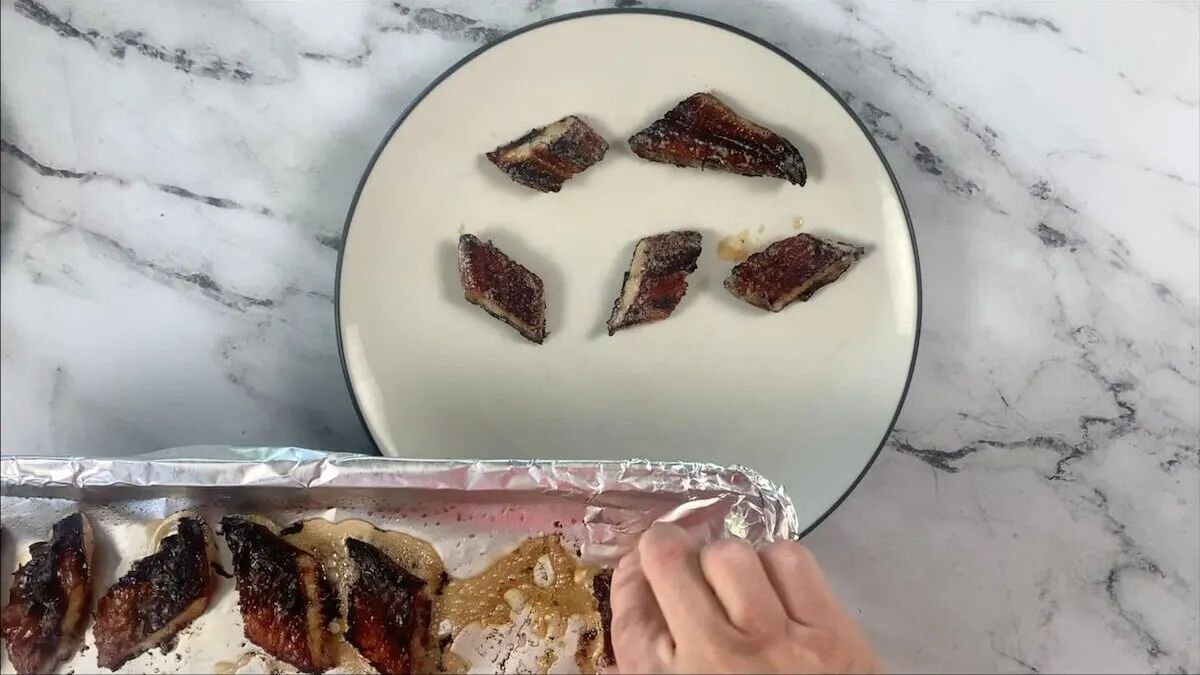
Assemble the Eel (Unagi) Rolls
1. Prepare your bamboo sushi mat: Cover your bamboo sushi mat with plastic wrap. This will help keep the rice from sticking to it.
2. Tear or cut the nori sheet in half: Fold the nori sheet in half and gently tear along the seam. If it does not tear easily, use kitchen shears to cut the nori sheet in half.
3. Press rice onto nori sheets: Next, place the nori sheet onto the plastic wrap with the shiny side facing down. Then press around 1/2 cup of rice onto half a nori sheet in an even layer. Tip: Wet your hands in a bowl of water mixed with a splash of rice vinegar prior to handling the sushi rice. This will prevent the rice from sticking to your hands.
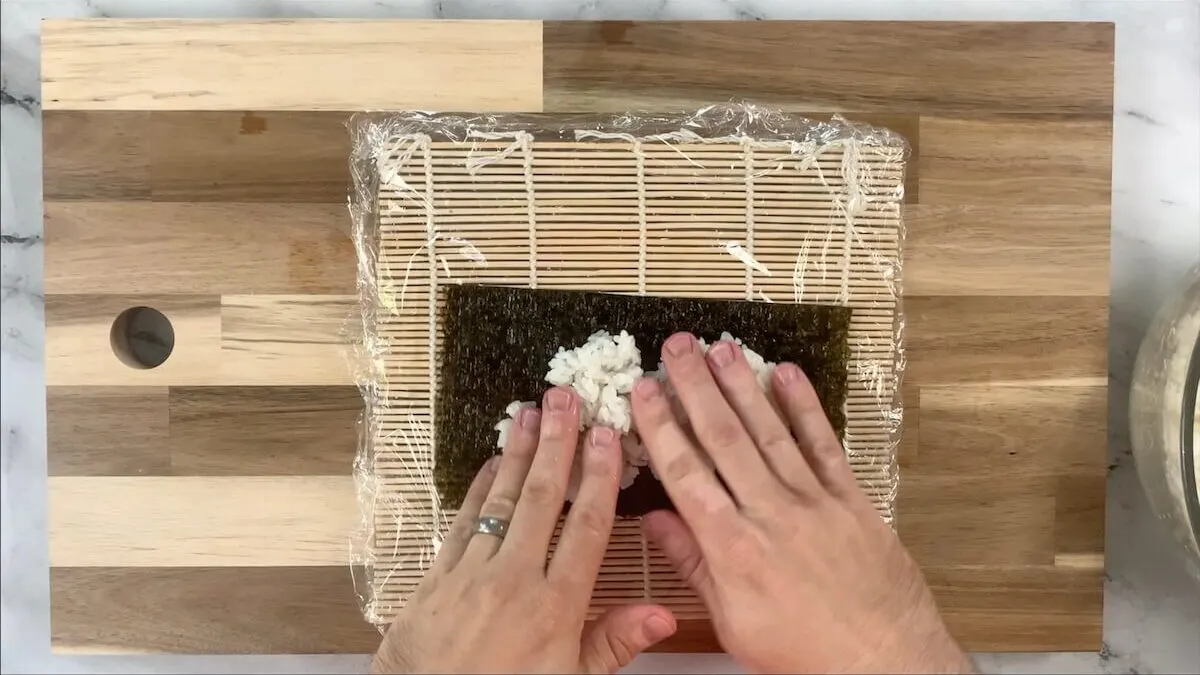
4. Add sesame seeds: After the rice is pressed onto the nori sheet, add a thin layer of sesame seeds to the top of the rice. Then flip the sheet over so the rice is facing down.

5. Cut the cucumber: Slice the cucumbers into strips that are as long as your nori sheet and about 1/8 inch thick.
6. Cut the avocado: Slice the avocado in half the long way. Remove the seed and cut each half into 6 slices. Each whole avocado should yield around 12 slices. I often cut the slices right out of the avocado half and add directly to the roll to ensure freshness. You can also drizzle a little lemon juice over your cut avocado to prevent it from browning in your roll.
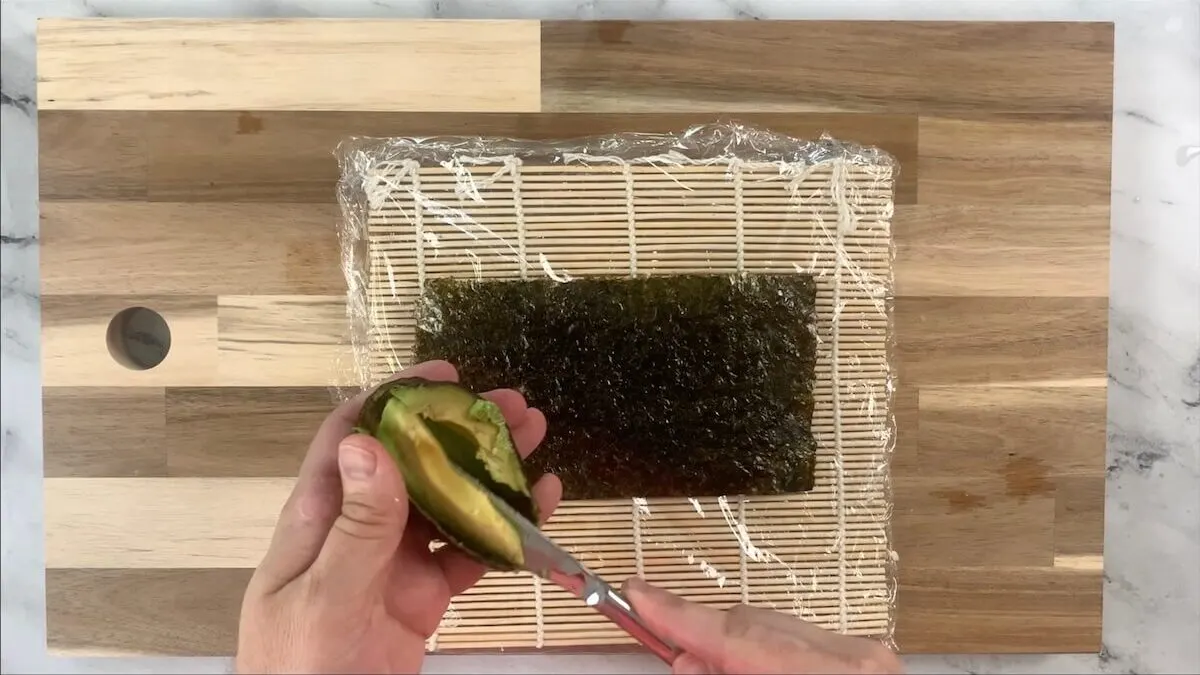
7. Add the avocado and cucumber: Add the avocado slices and cucumber sticks horizontally along the nori sheet. In general, I add 2-4 avocado slices and 1-2 cucumber sticks depending on the size of each ingredient and how everything fits.
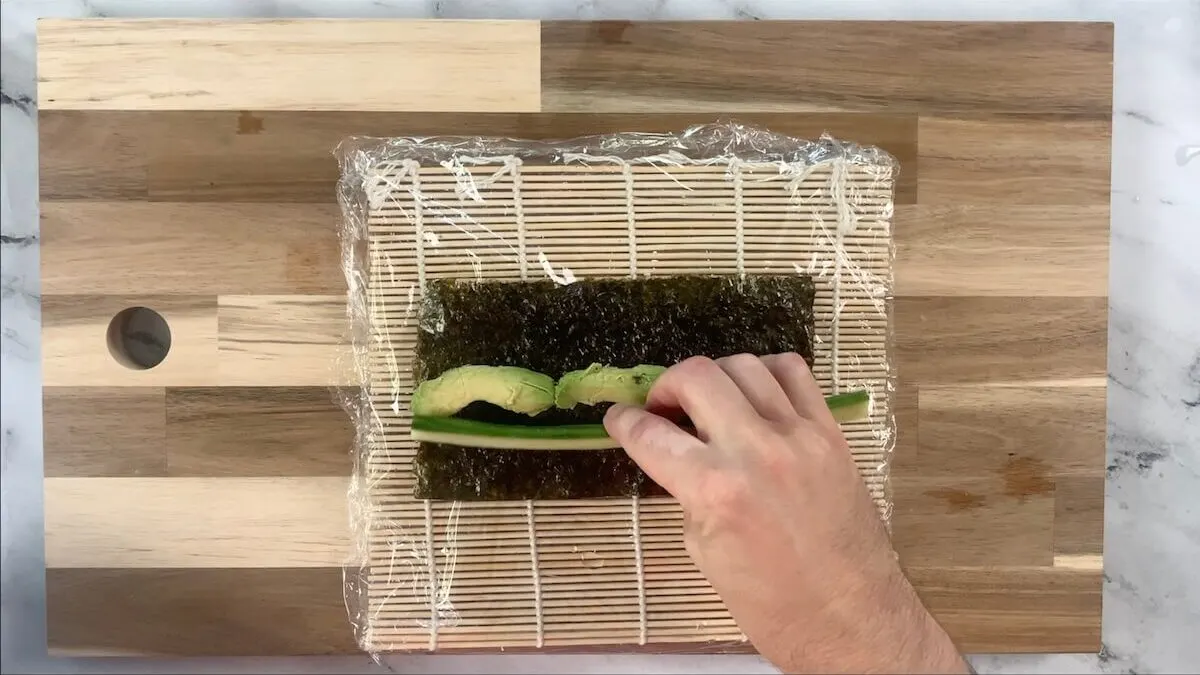
8. Add the eel: Add a single row of eel slices to the unagi roll. I usually add around three or four pieces but how many depends on the size of each piece.
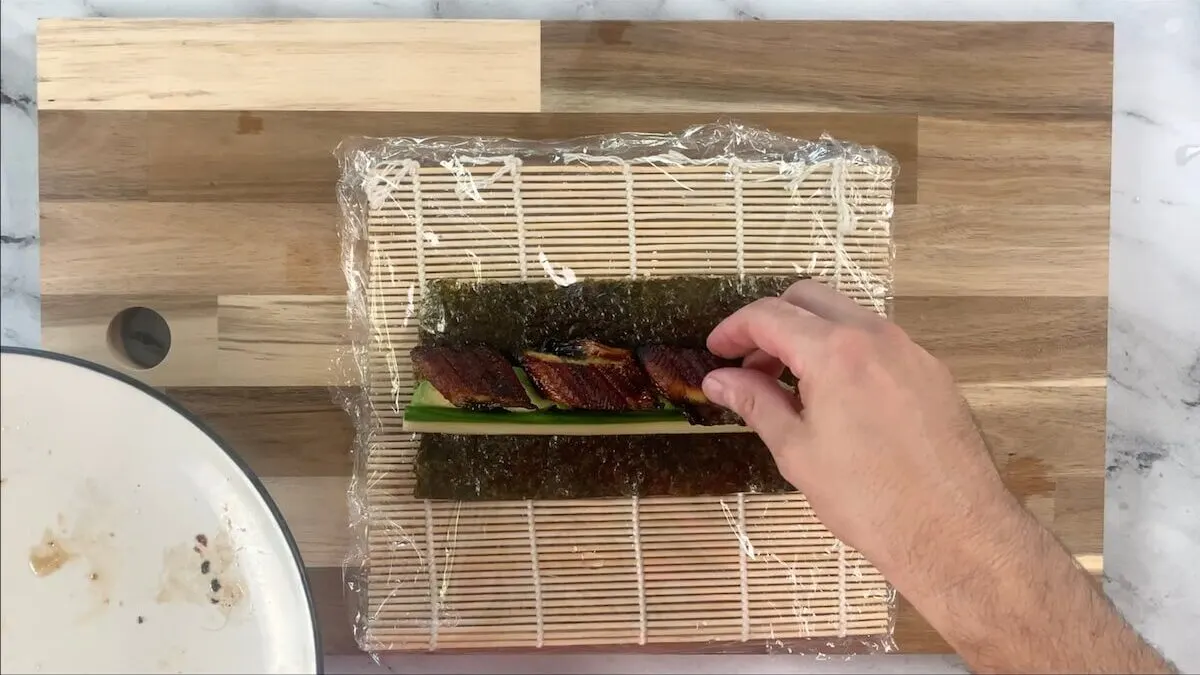
9. Drizzle the filling with unagi (eel) sauce: Drizzle a line of the unagi (eel) sauce over the eel pieces in the filling.

10. Roll the sushi: Use the bamboo sushi mat to fold your roll until it’s completely enclosed. Once the rice is making contact with the nori sheet, pull back the sushi mat so it doesn’t get caught in the roll. Still using the sushi mat as your guide, finish rolling until the roll is completely wrapped. Then wrap the sushi mat around the roll and gently tighten the roll together. Keep in mind that rolling sushi is an art that may take some practice so don’t get frustrated if it doesn’t look perfect your first time. It will get easier the more you do it. Tip: Check out the video for a demonstration on how to roll sushi.
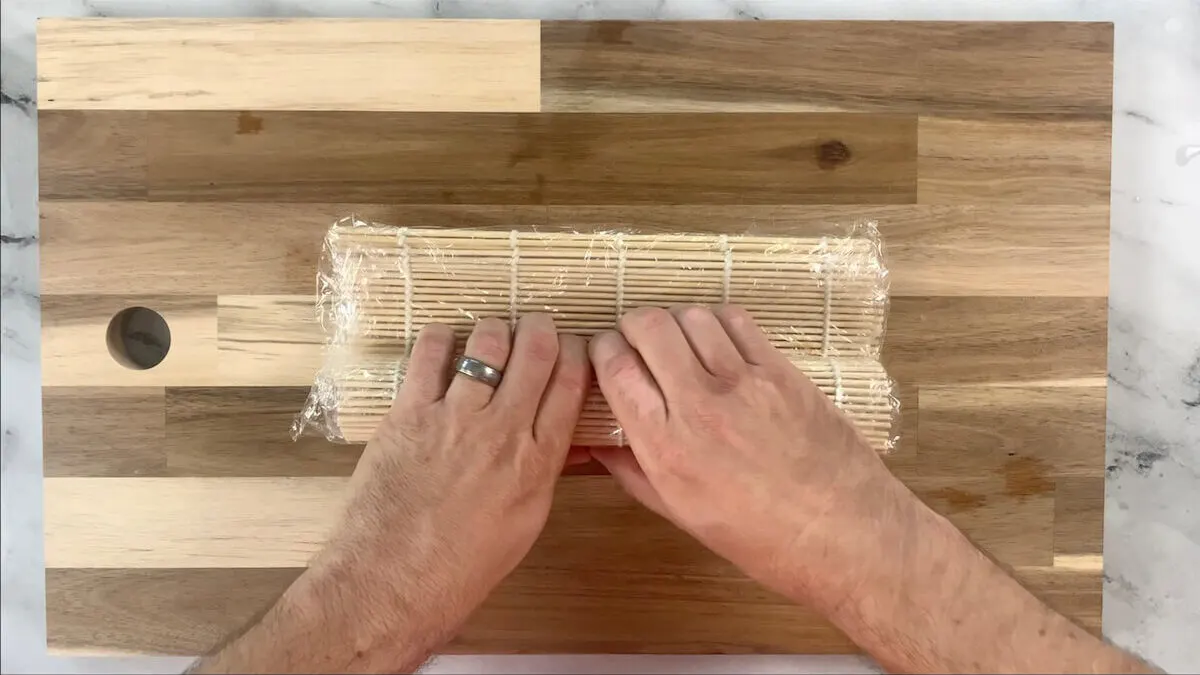
11. Cut the roll: Using a sharp knife, cut the roll into 8 pieces. I do this by first cutting the roll in half. I then cut each half in half followed by cutting each fourth in half. Tip: Be sure to clean and wet the edge of your knife before cutting each roll.

12. Drizzle with unagi sauce: Once the sushi roll is cut, drizzle the roll with unagi (eel) sauce to taste. I like to add a thinner layer of sauce to the top of the roll to make it easier to eat. You can always dip the pieces into a small ramekin of unagi (eel) sauce if you would like more sauce.
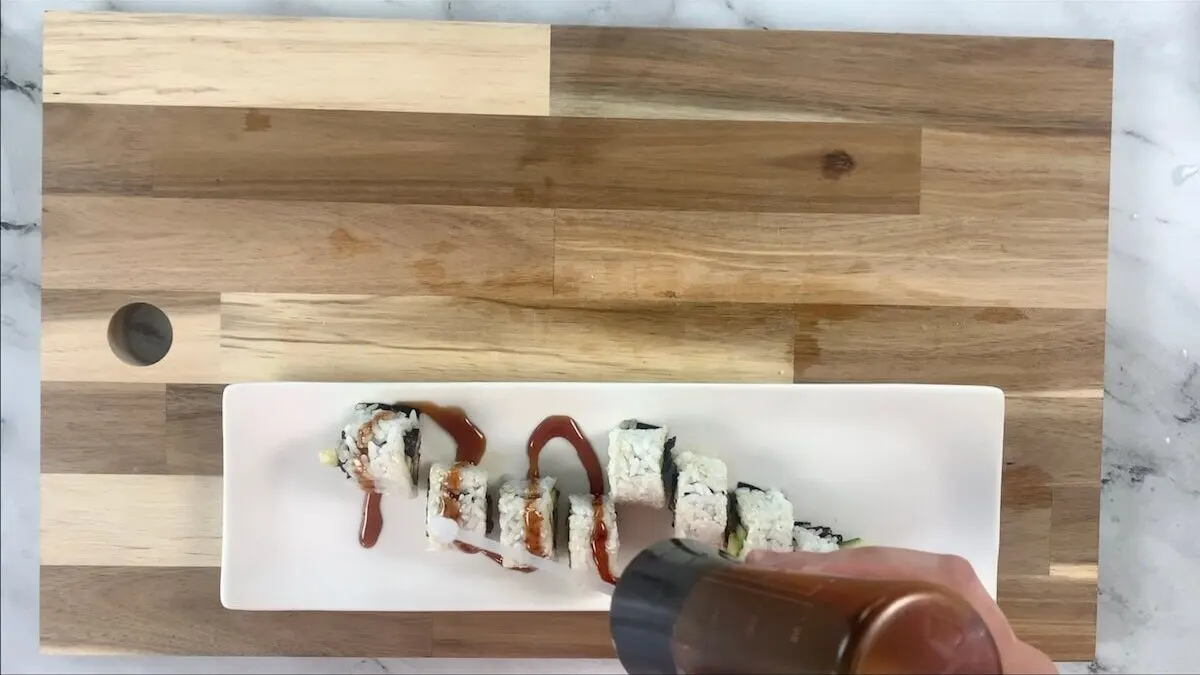
13. Serve and enjoy: In addition to unagi (eel) sauce, you can also serve with soy sauce, wasabi, and ginger.
Unagi (Eel) Roll Recipe
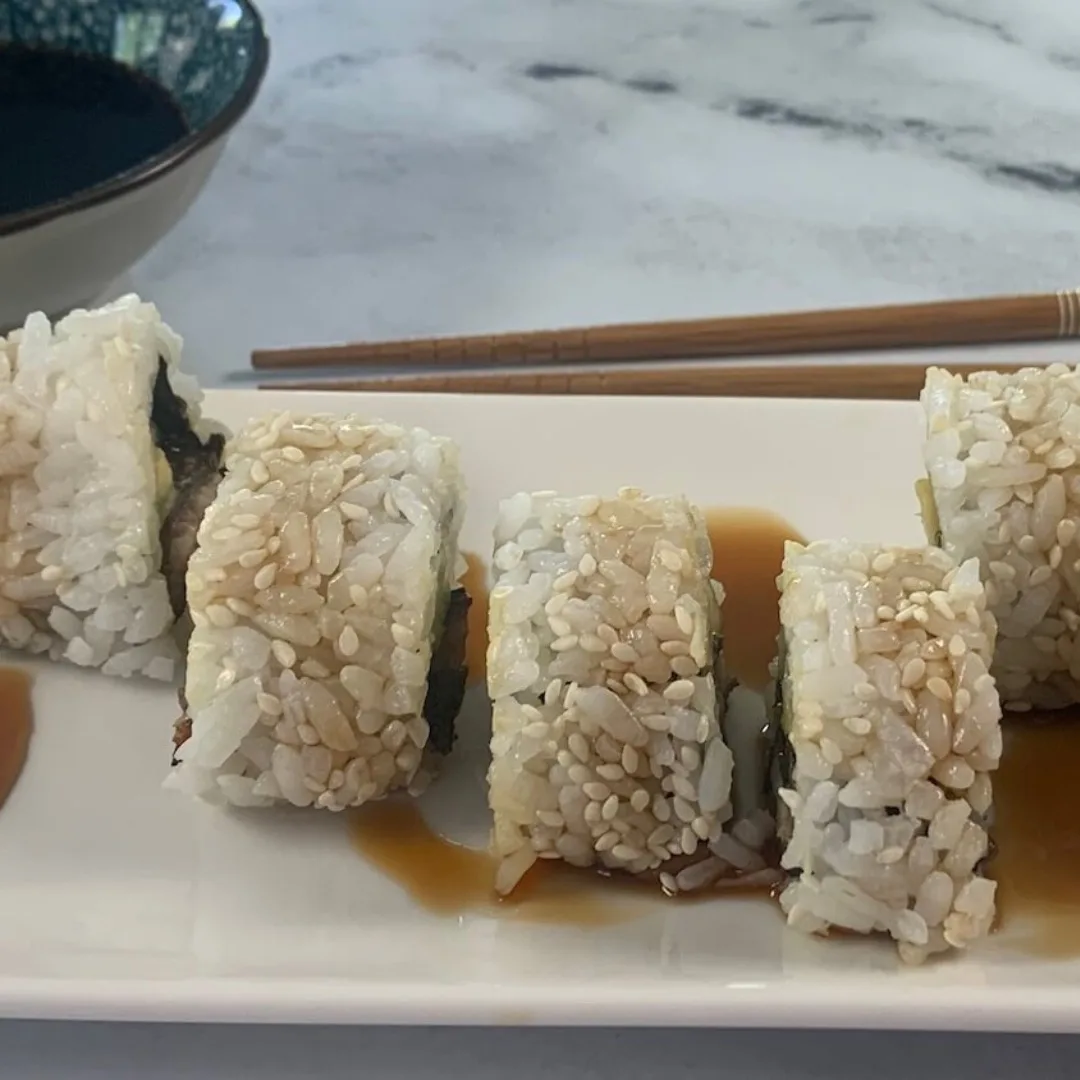
Unagi (Eel) Roll Recipe
Equipment
- 1 Bamboo Sushi Mat
- 1 Pot for cooking sushi rice
- 1 Sharp knife and cutting board
- 1 Baking sheet
Ingredients
Sushi Rice
- 2/3 cups Sushi Rice dried, will cook to 2 cups
- 2 Tbsp. Sushi Vinegar
Eel (Unagi) Sauce
- 1/2 Cup Soy Sauce
- 1/2 Cup Mirin
- 1/2 Cup Sugar
Roll and Filling
- 8 oz. Eel Fillet
- 2 Nori Sheets
- 1 Ripe Avocado
- 1 English Cucumber Sliced into 1/8 sticks
Instructions
- Thaw the eel fillet by putting in the fridge the night before you plan to use. If you are in a time crunch, you can also thaw it quickly by running the package through warm water.
Cook Sushi Rice
- Rinse 2/3 cups of sushi rice by placing it in a colander and running water through it until the water is clear.
- After the rice is rinsed, add it to a sauce pan with 1 cup of water (I would check the instructions on the sushi rice package to see exactly how much water to add as it can vary depending on the brand).
- Bring the water to a boil and then reduce the heat to low. Cover and let the rice simmer for 20 to 30 minutes, or until the water is absorbed and the rice is soft.
- Remove the rice and place into a bowl or dish and let cool. I would line the dish with parchment paper prior to adding the rice to avoid sticking.
- Mix two tablespoons of sushi vinegar into your rice. Stir until it has absorbed into the rice. Once cooled and fully absorbed, your rice is ready to roll!
Prepare the Eel (Unagi) Sauce
- To prepare the unagi sauce combine soy sauce, sugar, and mirin into a sauce pan and heat on medium heat. Mix together as the pan heats up until the mixture is combined.
- Bring the mixture to a boil and reduce the heat to simmer.
- Simmer for 10 to 15 minutes, stirring occasionally.
- Turn off the heat and let the sauce cool. You will notice it thickening as it cools.
Prepare the Eel
- Remove eel fillet from the package and place on a plate.
- Wipe the existing sauce from the eel with a paper towel or cloth. Many chefs don't do this but I don't love the sauce that comes on the eel. I instead prefer to add my own unagi sauce both inside the sushi roll with the fillings and drizzled over the top of the sushi roll after it is cut.
- Once the sauce is removed, slice the eel in half down the center creating two long fillets.
- Place half of the eel fillet at a 45 degree angle on the cutting board. Then cut the eel into slices an inch or so wide and around 3 inches long. When cutting, tilt your knife at a 45 degree angle.
- Add the eel strips to a greased baking sheet skin side up and broil on high for six minutes. Place on the top rack so it is around nine inches from the heat.
- After broiling, quickly remove the eel from the baking sheet and place on a plate to be used in the sushi later.
Assemble the Eel (Unagi) Rolls
- Prepare your bamboo sushi mat: Cover your bamboo sushi mat with plastic wrap. This will help keep the rice from sticking to it.
- Tear or cut the nori sheet in half: Fold the nori sheet in half and gently tear along the seam. If it does not tear easily, use kitchen shears to cut the nori sheet in half.
- Press rice onto nori sheets: Next, place the nori sheet onto the plastic wrap with the shiny side facing down. Then press around 1/2 cup of rice onto the nori sheet in an even layer. Tip: Wet your hands in a bowl of water mixed with a splash of rice vinegar prior to handling the sushi rice. This will prevent the rice from sticking to your hands.
- Add sesame seeds: After the rice is pressed onto the nori sheet, add a thin layer of sesame seeds to the top of the rice. Then flip the sheet over so the rice is facing down.
- Cut the cucumber: Slice the cucumbers into strips that are as long as your nori sheet and about 1/8 inch thick.
- Cut the avocado: Slice the avocado in half the long way. Remove the seed and cut each half into 6 slices. Each whole avocado should yield around 12 slices. I often cut the slices right out of the avocado half and add directly to the roll to ensure freshness. You can also drizzle a little lemon juice over your cut avocado to prevent it from browning in your roll.
- Add the avocado and cucumber: Add the avocado slices and cucumber sticks horizontally along the nori sheet. In general, I add 2-4 avocado slices and 1-2 cucumber sticks depending on the size of each ingredient and how everything fits.
- Add the eel: Add a single row of eel slices to the unagi roll. I usually add around three or four pieces but how many depends on the size of each piece.
- Drizzle the filling with unagi (eel) sauce: Drizzle a line of the unagi (eel) sauce over the eel pieces in the filling.
- Roll the sushi: Use the bamboo sushi mat to fold your roll until it is completely enclosed. Once the rice is making contact with the nori sheet, pull back the sushi mat so it doesn't get caught in the roll. Still using the sushi mat as your guide, finish rolling until the roll is completely wrapped. Then wrap the sushi mat around the roll and gently tighten the roll together. Keep in mind that rolling sushi is an art that may take some practice so don’t get frustrated if it doesn’t look perfect your first time. It will get easier the more you do it. Tip: Check out the video for a demonstration on how to roll sushi.
- Cut the roll: Using a sharp knife, cut the roll into 8 pieces. I do this by first cutting the roll in half. I then cut each half in half followed by cutting each fourth in half. Tip: Be sure to clean and wet the edge of your knife before cutting each roll.
- Drizzle with unagi sauce: Once the sushi roll is cut, drizzle the roll with unagi (eel) sauce to taste. I like to add a thinner layer of sauce to the top of the roll to make it easier to eat. You can always dip the pieces into a small ramekin of unagi (eel) sauce if you would like more sauce.
- Serve and enjoy: In addition to unagi (eel) sauce, you can also serve with soy sauce, wasabi, and ginger.
Video
Notes
Nutrition
Frequently Asked Questions
Are unagi (eel) rolls gluten-free?
In most cases, unagi (eel) rolls will contain gluten as the eel is often marinated in a soy sauce based marinade. In addition, unless you make the unagi sauce yourself (which I do recommend), it will also likely contain gluten as it contains soy sauce.
Are unagi (eel) rolls a traditional Japanese sushi?
Yes, unagi (eel) rolls are a traditional Japanese sushi and are commonly eaten in Japan. However, unagi nigiri is more popular in Japan than unagi rolls.
Are unagi (eel) rolls cooked?
Yes, the unagi (eel) in unagi rolls is fully cooked. Unagi (eel) rolls contain no raw fish or meat.
Are unagi (eel) rolls healthy?
Yes! Unagi, or Japanese freshwater eel, is loaded with omega-3 fatty acids along with several vitamins. The cucumber and avocados are also very nutritious. I would just limit the amount of unagi sauce you use as that is higher in calories and lower in nutritional benefits.
Final Thoughts on Unagi (Eel) Rolls
The delicate flavor of the eel combined with the tangy unagi sauce give unagi rolls a flavor that’s hard to beat. I hope that you enjoy this recipe as much as I do. Happy cooking!
For more fun sushi recipes, check out the below articles:
Also, subscribe to our YouTube Channel for some great videos!

Robert Schaffart
Friday 14th of June 2024
Loved this!